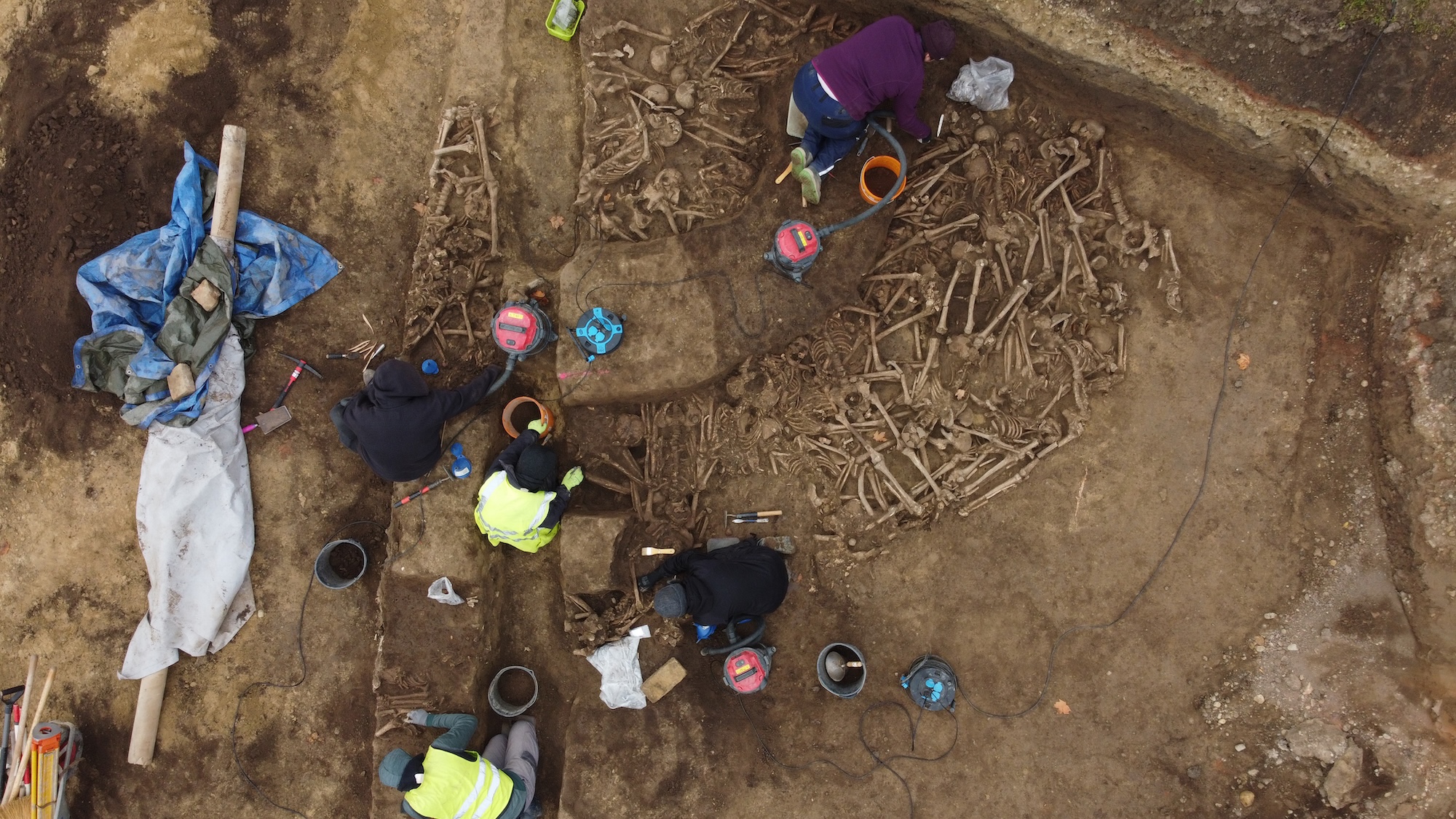Soccer field renovations near Vienna, Austria recently revealed a significant—if grim—archeological find: a mass grave dating back to the first century CE and Roman empire. The gravesite contained the skeletons of potentially over 150 soldiers. According to archeologists, the discovery is as dark as it is unique, and may provide unexpected new insights into life on the Roman frontier at the height of the nation’s power.
The city of Vienna has existed for hundreds of years, but its history extends even further into the past. Roughly 2,000 years ago, Rome’s forces stretched into present-day Austria and established multiple military outposts across the region. One of the largest garrisons constructed was a settlement known as Vindobona on the Danube River, and it eventually grew to include 16,000 to 20,000 residents. Rome ultimately left Vindobona to the Huns in 433 CE, and the outpost was subsequently abandoned for centuries. However, experts only have historical accounts of combat in the region prior to this and t no direct evidence.
In October 2024, a construction team came across a sea of skeletal remains while working on renovations to a soccer field in Vienna’s neighboring town of Simmerling. Archeologists from the Vienna Museum soon visited the site and confirmed the extraordinary: a mass grave of at least 129 individuals, but likely many more. Further analysis confirmed that the bodies belonged almost exclusively to 20 to 30 year old Roman legionnaires, all of whom appear to display evidence of fatal battle injuries from spears, swords, daggers, and bolts.
But as surprising as this discovery is from an everyday perspective, it also proved hard for archeologists to believe. As history shows, Rome wasn’t known for its lack of military campaigns. But until the fourth century CE, Romans didn’t even bury bodies.Instead, they cremated them.
“In the Roman Empire, there were strict burial rituals, and precise rules had to be followed for the time after death,” Kristina Adler-Wölfl, Vienna’s head of archeology, said in a city announcement. “Since cremations were common in the European parts of the Roman Empire around 100 AD [CE], inhumations are an absolute exception. Finds of Roman skeletons from this period are therefore extremely rare.”
“Within the context of Roman acts of war, there are no comparable finds of fighters,” dig leader Michaela Binder added on April 4 in Arkeonews.

Historical accounts report multiple battles between Roman forces and Germanic tribes on the Danube border during the reign of Emperor Domitian (81-96 CE). These led his successor, Emperor Trajan (98-117 CE), to expand the Vindabona fortification borders, later known as the Danube Limes.
“The mass grave in Simmering is the first physical evidence of fighting from this period and indicates the location of a battle in the area of present-day Vienna,” said archeologist Martin Mosser.
According to Mosser, the mass gravesite may directly relate to Emperor Trajan’s decision to bolster defenses in the area following the Germanic conflict.
Archeologists plan to further excavate the gravesite, as well as conduct DNA and isotopic analyses to better understand the warriors’ living conditions. In time, the unique discovery may also expand and clarify what we know about Roman history during the first century.
“In Vienna, one is always prepared to encounter Roman traces as soon as one opens up a pavement or opens the earth,” said Veronica Kaup-Hasler, Vienna’s Executive City Councillor for Culture and Science. “After all, Vindobona laid the foundation stone of our city.”


